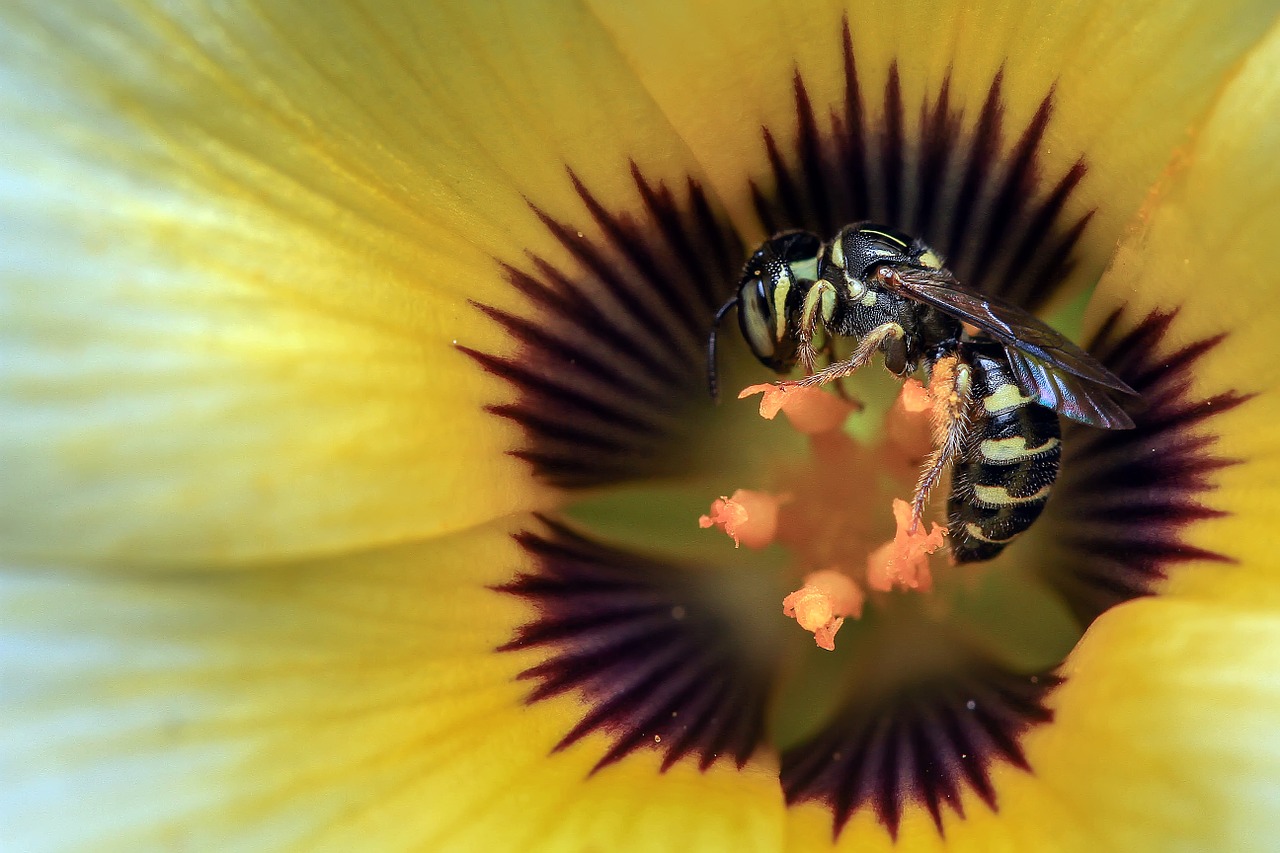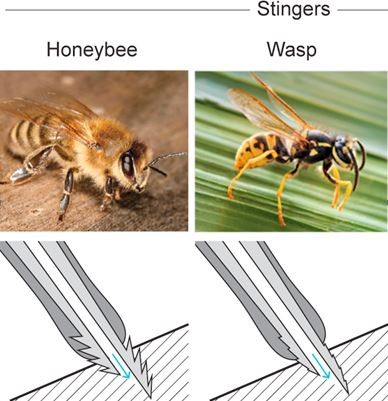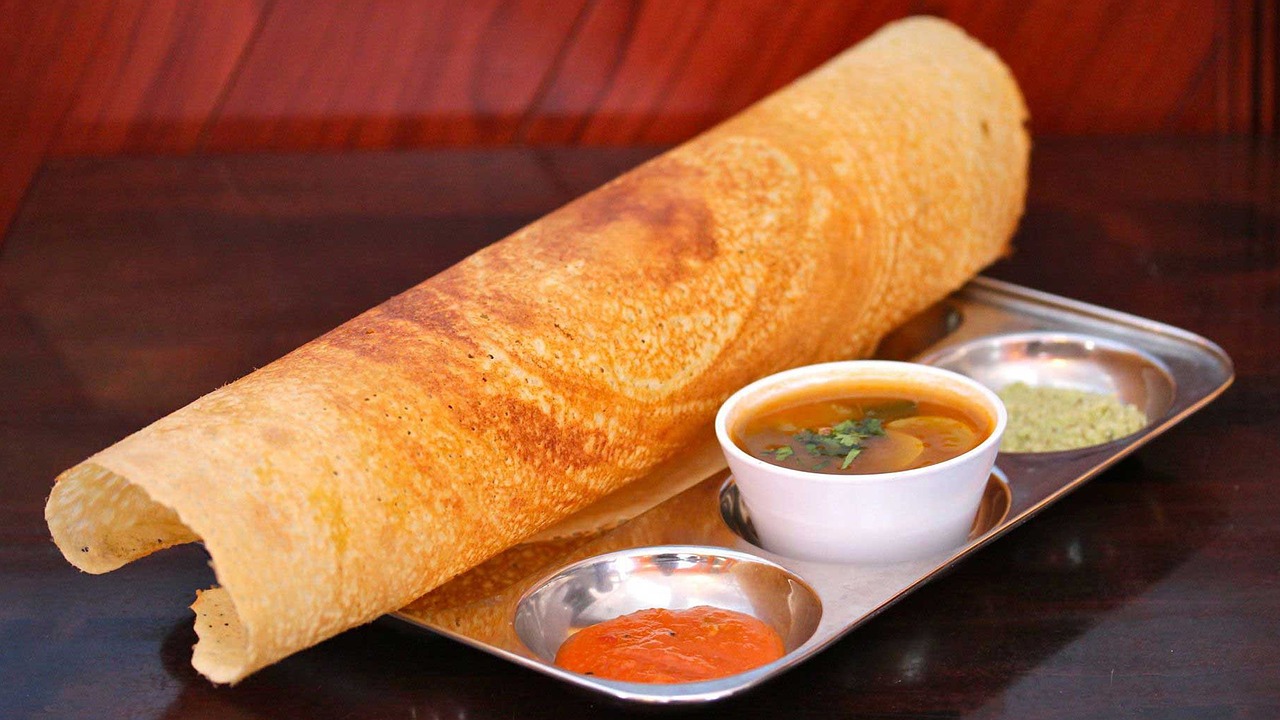
Insect Stings Inspire Syringe-Needle Designs
- News
- 3K
Inspired by mosquito and honeybee stings, scientists are trying to design a smart syringe needle that promises to be painless as well as skin-friendly while delivering medicine into the bodies of patients.

IMAGE Dr. Navin Kumar (Left) and Prof. Bharat Bhushan (right)
A group of scientists working at Indian Institute of Technology (IIT)-Ropar and Ohio State University have jointly studied stingers of wasps, honeybees, and mosquitoes. They examined the structure and mechanical properties of the stings and also mechanical behavior during insertion of wasp and honeybee stingers as well as piercers in the mosquito.
By understanding how insects penetrate their stings into the skin, scientists hope to develop painless and non-damaging needle-syringe system. The piecing process has been studied through material properties of bee and wasp stingers, and mouthparts of mosquitoes.

Honeybees and wasps sting their prey to release venom into them. Honeybee uses a pair of barbed stylets which move back and forth sliding upon each other while being stung into the prey. Wasps and bees release the venom when one stylet constantly slides over another, thus creating a pressure difference.
Mosquitoes use proboscis, a feeding organ, to suck blood from victims. Vibratory motion of proboscis helps reduce insertion force which, in turn, helps in sucking blood with minimum deformation of tissue. The proboscis is a long sucking mouthpart in insects which has a tube-like structure and is also flexible.
The study found that the unique structural and functional features of wasp and bee stingers are reasons responsible for painless piercing. These special features include the presence of gradient material which makes up the stinging part, numbing agent secretion or venom which is put into the skin of prey, saw-like or toothed design at the tip of sting organ and characteristic motion of the stinging part. In bees and wasps, a constant sliding motion of stylet pair creates a negative pressure which automatically deposits venom into the skin via sliding stylets.
Similarly, mosquito piercing is painless due to vibratory insertions and saw tooth design of the sucking part which is also known as fascicle and secretion of numbing agent. They can suck blood very easily and imperceptibly by creating a low pressure above. Blood gets sucked in without any pumping action.
“The design inspired from mosquito sucking mechanism can help us in making a painless syringe needle system which can be used for taking blood samples from veins of patients without causing any pain. Bee and wasp sting mechanism could help in developing a syringe-needle system, which can be used in painless drug delivery systems,” explained Dr. Navin Kumar of IIT-Ropar, while speaking to India Science Wire.
The structure of the stingers was analyzed using 3D computed tomography and optical microscopy. In addition, researchers studied static mechanical properties of stingers such as variation of modules, hardness, and softness along the length, 3D linear and cross-sectional area, sliding channels and venom path.
The proposed design of microneedle has an indented or toothed design at the tip, with a fluid passage running across. It also includes a numbing agent secretor which is enclosed within a thick covering. It is made up of a viscoelastic material possessing material gradients both horizontally as well as vertically.
The research team included Rakesh Das, Ram Naresh Yadav, Praveer Sihota, Piyush Uniyal, Navin Kumar (IIT Ropar) and Bharat Bhushan (Ohio State University). The study results have been published in Scientific Reports and Journal of the Mechanical Behaviour of Biomedical Materials. (Indian Science Wire)
By Rayies Altaf
Journal Article
Biomechanical Evaluation of Wasp and Honeybee Stingers
If you liked this article, then please subscribe to our YouTube Channel for the latest Science & Tech news. You can also find us on Twitter & Facebook.


